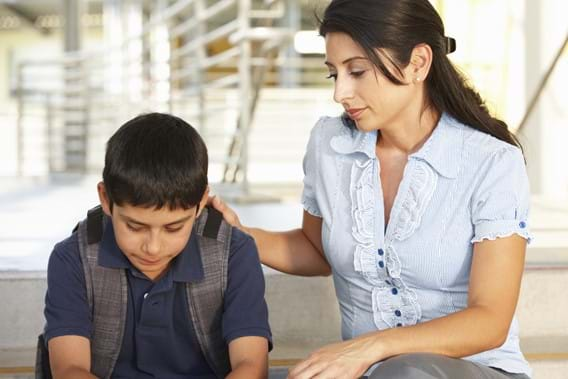
Learning by Failing

Written by: Stéphanie Deslauriers
Success and failure are part of life. Everyone, without exception, experiences both. That being said, how can you help your child cope with failure?
Put Things in Perspective
First, it’s a good idea to help children play down the failure they are going through. Yes, it’s disappointing, sad or irritating. Show empathy, encouraging your child to open up about it; you can even share one of your own failure stories. This will help your child realize he or she is not the only one who fails, that there are solutions and that it’s far from being the end of the world! You can also explain that failure is not a permanent situation, that it can be overcome and that lessons can be drawn from this experience to succeed in the future.
Learning from Mistakes
“I have not failed. I’ve just found 10,000 ways that won’t work.” - Thomas A. Edison, inventor
Yes, we learn from our mistakes and failures. We realize that our strategies weren’t effective in a certain situation, so we substitute them for more efficient ones. When going through painful emotions, such as disappointment, anger or sadness, we get to know ourselves better. While those emotions aren’t pleasant to experience, they’re universal, normal and healthy. So, we learn to express and deal with them… and to roll up our sleeves, too!
Attitude
The attitude we adopt toward failure is the key to managing heightened emotions. If the experience of failing plunges the child into a state of intense despair, causing second guessing or self-loathing ("I’m worthless!"), it’s very likely due to the fear or reliving failure. Which is totally normal, because who likes to feel like that? But the more a child tries avoiding failure, the less he or she will feel inclined to take on stimulating challenges and experience new situations. Basically, the child’s refusal to leave his or her comfort zone will lead to stagnation in the development. Ultimately, when inevitably faced with a new situation of failure, the child will be distraught for lack of experience to dealing with disappointment and feel like it’s the end of the world.
As a parent, you can exercise a positive influence by having a good attitude when you experience failure. “I’m disappointed, but I know it’ll pass. I’ll persevere and try to find another solution.” This perseverance will certainly inspire your child to act similarly.
Finally, changing the false perceptions your child might have toward failure will help improve his or her attitude when confronted by this kind of situation. For example, you could tell them: “You’re not useless. You simply weren’t paying attention, which affected your grade for this exam.” This way, your child will learn to be more lenient toward himself or herself.
Setting Realistic Goals
Is failure the result of a goal that was set too high? That was out of the child’s reach? Who set this objective? The child himself? A family member? A teacher? A coach? It’s better to go for smaller, realistic goals to allow your child to experience success, and thus build self-esteem and a sense of efficiency which will in turn motivate your child to keep progressing slowly but surely toward an ultimate objective that maybe wasn’t realistic to start with. It's best to start with easy goals and gradually move on to more difficult ones, until your child is able to successfully accomplish the hardest ones!
Impacts of Recurrent Failure
If a child keeps repeating the same actions in similar situations, the same consequences will inevitably follow over and over again. Recurring failure can result in children accepting they have no control over what happens and that their actions are pointless and destined to fail. This can impact motivation in the long term and eventually lead to a passive attitude in the face of a challenge, as these kids will tell themselves they won’t overcome the situation anyway. Of course, all this has an impact on a child’s self-image and self-esteem.
So how can you bring your child to try new solutions?
Through discussion, and by encouraging him or her to consider the relevance and scope of the solution chosen, as well as its efficiency. Upon the realization that a certain solution is not ideal, your child will turn to alternative strategies. These can be learned in several different ways: by observing how you handle certain situations; by reading a story in which a character uses an effective strategy; by watching a movie in which the hero recovers from a mistake; or by getting inspiration from other important and pro-social people in your child’s life (siblings, friends, extended family, etc.)


